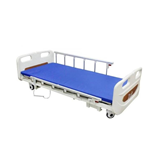In healthcare settings, infection prevention is critical to the safety of both healthcare workers and patients. One of the most essential pieces of personal protective equipment (PPE) used to prevent the spread of infections is the isolation gown. Designed to provide a barrier between infectious materials and the body, isolation gowns play a key role in reducing the transmission of pathogens, particularly in environments where healthcare professionals are exposed to bodily fluids, airborne particles, or infectious droplets.
What Are Isolation Gowns?
Isolation gowns are a form of PPE designed to protect healthcare workers' skin and clothing from contact with blood, bodily fluids, and other potentially infectious materials. They are commonly used in hospitals, clinics, and long-term care facilities where healthcare providers may be exposed to high-risk environments. The gowns act as a barrier, preventing the spread of infectious agents that could otherwise be transmitted through direct contact or through airborne droplets.
Key Functions of Isolation Gowns
- Protection for Healthcare Workers
- Isolation gowns provide a physical barrier to pathogens, helping to protect healthcare workers from contact with infectious agents. This is especially important when treating patients with infectious diseases, such as COVID-19, influenza, or other contagious illnesses.
- Healthcare workers face increased risk due to their close proximity to patients, making high-quality isolation gowns an essential line of defence.
- Preventing Cross-Contamination
- Isolation gowns also play a crucial role in preventing cross-contamination within healthcare facilities. By preventing healthcare workers' clothing or skin from becoming contaminated with infectious materials, the gowns help limit the spread of pathogens from one patient to another.
- This is especially important in settings where patients with compromised immune systems, such as those in intensive care units, are at a heightened risk of contracting infections.
- Protecting Patients from Infections
- Not only do isolation gowns protect healthcare workers, but they also protect patients, particularly those with weakened immune systems or those recovering from surgery. When healthcare workers wear proper PPE, they reduce the likelihood of transmitting infections to vulnerable patients.
- This dual protection is vital in maintaining the safety and well-being of both caregivers and those receiving treatment.
Types of Isolation Gowns
Isolation gowns come in various types and protection levels, each designed for different levels of exposure risk. The American National Standards Institute (ANSI) and Association for the Advancement of Medical Instrumentation (AAMI) classify isolation gowns into four protection levels:
- Level 1 (Minimal Risk):
- Used in standard care, such as during basic patient interactions or in a standard hospital ward. These gowns provide a simple barrier against light fluid exposure.
- Level 2 (Low Risk):
- Suitable for situations where there is a low risk of exposure to fluids. Examples include drawing blood from patients or working in the pathology lab.
- Level 3 (Moderate Risk):
- Used in more invasive procedures, such as inserting an IV or during trauma patient care. These gowns offer a higher level of fluid protection.
- Level 4 (High Risk):
- Designed for high-risk environments where there is a potential for significant exposure to bodily fluids, such as in surgery or when treating COVID-19 patients in ICU. These gowns provide maximum protection against fluid and pathogen penetration.
Disposable vs. Reusable Isolation Gowns
- Disposable Isolation Gowns: These are single-use gowns that are typically made of lightweight materials such as polyethylene or polypropylene. They are designed for convenience and offer the advantage of being discarded after each use, reducing the risk of cross-contamination. However, this convenience often comes with the downside of increased environmental waste.
- Reusable Isolation Gowns: Made from durable, washable materials like polyester or cotton blends, reusable gowns can be cleaned and sterilised after each use, making them a more sustainable option. Although they require more resources for cleaning, they are an environmentally friendly alternative to disposable gowns.
The choice between disposable and reusable isolation gowns depends on the facility's needs, budget, and environmental policies. Both types play an essential role in infection control.
Best Practices for Using Isolation Gowns
For isolation gowns to be effective, proper usage is critical. Healthcare facilities should ensure that staff are trained in the correct procedures for donning (putting on) and doffing (removing) isolation gowns to avoid contamination.
- Donning:
- Ensure hands are clean before putting on the gown.
- Secure the gown around the neck and waist to ensure full coverage.
- Doffing:
- Carefully untie the gown without touching the outside, which may be contaminated.
- Remove the gown by pulling it away from the body, turning it inside out in the process, and discard it safely in a biohazard bin or set aside for cleaning if reusable.
- Always perform hand hygiene immediately after removing the gown.
Proper donning and doffing practices minimise the risk of spreading pathogens and are essential to keeping healthcare environments safe.
The Future of Isolation Gowns
Innovations in PPE materials and manufacturing are continually improving the effectiveness of isolation gowns. Advances in fabric technology have led to the development of more comfortable, breathable gowns that still provide high levels of protection. In the future, we can expect to see isolation gowns with antimicrobial properties, designed to actively reduce the presence of pathogens on the gown's surface.
Conclusion
Isolation gowns are indispensable in protecting healthcare workers and patients from infections in healthcare environments. Whether disposable or reusable, isolation gowns serve as a critical barrier to pathogens, helping to maintain a safe and sterile environment. By choosing the appropriate type and level of isolation gown, healthcare facilities can ensure that their staff and patients are well protected.








-160x160-state_article-rel-cat.png)































